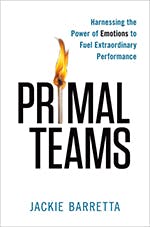Nothing stifles innovation like a good, old-fashioned rut. Picture Larry, a transistor assembler at Proficient Manufacturing, a huge manufacturing company. He focuses so intently on efficiently using state-of-the-art methods to perform his work that he never pauses to imagine ways the company might improve its assembly methods. Not to criticize Larry for his all-out commitment to efficiency, but that obsession has become a roadblock to innovation. How can he get out of that rut and possibly gain a sudden flash of insight and shout, “Aha! I’ve got it! The components will click into place like greased lightning if we magnetize some of the parts.”
Manufacturing thrives on innovation. In a September 2014 article published in the MIT Technology Review, Nanette Byrnes observed, “Manufacturing will make its most essential economic contribution as an incubator of innovation: the place where new ideas become new products.” Who can most reliably come up with those breakthrough ideas? People like Larry, who actually do the work. Unfortunately the current culture at Proficent actually hampers his ability think outside a pretty deep rut. It happens to a lot of companies, and it happens all the time.
Other researchers agree. In an article published in a 2011 issue of the Personality and Social Psychology Bulletin Kou Murayama, lecturer at the School of Psychology and Clinical Language Sciences at the University of Reading, and Andrew Elliot, professor of psychology at the University of Rochester, offered evidence that when workers strive to attain specific performance metrics, such as increasing throughput or yield, their overall performance actually suffers. In other words, when people concentrate on performance goals, they only see the little picture in front of their eyes and use only existing, proven techniques to get the job done. Creative problem solving falls by the wayside. In contrast, when people strive to become masters at their jobs, they grasp a bigger picture and will more likely come up with bright ideas to improve overall results. Reward Larry for becoming a master assembler rather than a more efficient one, and he just might study the latest developments in assembly technology and look for ways to make Proficient’s products better, not just more efficiently assembled.
Murayama and Elliot tested the effects of mastery versus performance goals on long-term memory. The results supported the idea that when it comes to innovation, mastery boosts working memory. From a neuroscientist’s point of view, mastery goals seem to spark broad-based encoding of memories, whereby the brain stores rich and variable contextual associations it can easily access in the future. Performance goals, with their narrower focus, stimulate fewer such contextual associations for later access. When Larry sets out to become a master assembler, he’s more likely to remember the details of what he’s studied and draw upon them to improve Proficient’s products.
Leaders can lift their people out of their habitual thinking patterns by exposing them to unusual combinations of data and ideas.
—Jackie Barretta
Gregory Berns, a distinguished professor of neuroeconomics at Emory University, who wrote the book Iconoclast: A Neuroscientist Reveals How to Think Differently, calls the human brain “a lazy piece of meat.” It’s gotten lazy because it has evolved for efficiency and likes to take perceptual shortcuts to save energy. Thinking inside the rut takes a lot less energy than getting outside it to consider fresh and novel ways to do something. The rut becomes a habit and grows deeper and deeper. That’s the bad news. The good news: leaders can lift their people out of their habitual thinking patterns by exposing them to unusual combinations of data and ideas.
It doesn’t take a degree in neuroscience to do that. Simply encourage your people to engage in new and interesting activities. Suppose you are Larry’s manager. One Monday morning you ask him to switch jobs with someone who works at the packaging end of the assembly line. It takes Larry a few days to get the hang of the new job, but before long he shakes his head and tells you, “The finished product is so bulky, it takes way too much packing material to secure it in its box.” Aha! This observation sparks an insight: “I know how we can tighten the assembly process and reduce the gaps between components.” You love the idea and set about making it happen. While the improvement costs some time and money, in the long run it eliminates a lot of waste, reduces overall manufacturing costs, enhances profitability and delights Proficient’s customers. And Larry? The meeting in which you acknowledge his innovative idea not only makes him feel like a hero, it inspires others to come up with creative solutions of their own.
When everyone at Proficient worried only about efficiency, that preoccupation colored their view of their work. But when Larry proved the value of improving more than the efficient assembly of transistors, he made a huge contribution to his company’s success. Single-minded preoccupation with one performance metric had blinded him (and everyone else on the assembly line) to the other equally important aspects of building the company’s products. Goodbye rut, hello innovation!





